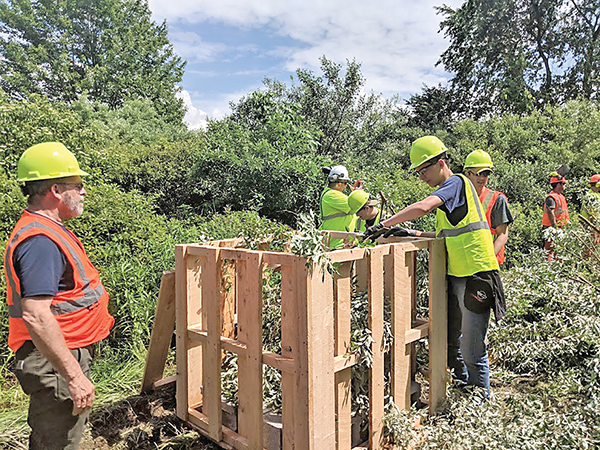Let’s start this piece by first talking about cover and structure for fish. So what does the title, “Wildlife Leadership Academy” have to do with cover and structure? I’ll get to that in a minute, but what about cover and structure?
If you’re a fisherman, you know the importance of cover and structure in a lake or stream. Basically, the terms cover and structure refer to contour changes and anything protruding, hanging over, laying in or growing from a body of water. This includes weeds on top and growing from the bottom, stumps or trees that have been flooded, rock structure, docks, trees laying partially in the water, overhanging trees or any other item that is capable of providing cover for fish. This cover protects fish, spawning areas and it also provides cover for fish like bass and pike that like to ambush prey; in other words, if you find cover, there’s a good chance you may also find fish.
Cover is generally a very positive thing, and some lakes have plenty of cover and some lack sufficient cover. I enjoy fishing the manmade dam at Bald Eagle State Park, especially in the spring of the year since a lot of fish are making use of the ample cover that is found there. Much of that cover is manmade and has been placed in the lake to provide greater fishing opportunities, and I don’t hesitate to take advantage of it.
Now, here’s where the Wildlife Leadership Academy comes into play. Last week I had the opportunity to spend the day with 20 high school age kids who are participating in the academy. Part of the day was spent building a number of fish structures that were placed at various locations in the lake at Bald Eagle State Park.
The Wildlife Leadership Academy is a 501(c)(3) non-profit organization. It is a co-operative initiative involving state agencies and conservation organizations. Their mission is to engage and empower high school age youth to become Conservation Ambassadors to ensure a sustained wildlife, fisheries, and natural resource legacy for future generations. The academy provides training and field experience through five different five-day field schools including Bucktails, Bass, Brookies, Drummers and Gobblers. The names of the field schools tell what that week’s specialty involves.
At Bass Camp last week, as I already mentioned, the academy participants were building a number of fish structures. The approximately 4×4 hemlock cribs weighted down with cement blocks were stuffed with fresh cut Autumn Olive branches. Bass Camp participants were decked out in hard hats, protective glasses, and other gear as they assisted in cutting and stuffing the cribs. It was a hot day, and the work was hard, but they all seemed to enjoy the event. After the cribs were built, they were loaded onto a pontoon boat and sent to their destination at the bottom of the lake.
Michele Kittell, Executive Director, told me this was the 4th such camp in Pennsylvania. Staff from the park provided the necessary materials and equipment to carry out the cover building and placing project. Gary Alt, the former bear biologist here in Pennsylvania and one of the camp directors, was also on hand to direct daily workshops and sessions. Many of the former participants return to assist in camp activities. Kyle Clark, a former “Bucktail” is a Ph.D. candidate at Penn State and was serving as one of the camp instructors.
Obviously, the camps are a very positive experience for those who are able to participate. To learn more about the camps and how to become a participant, pull up Wildlife Leadership Academy on the internet. In the meantime, I hope to get back to the lake soon to “check out” some of that fish structure.





Leave a Comment
Your email address will not be published. Required fields are marked with *